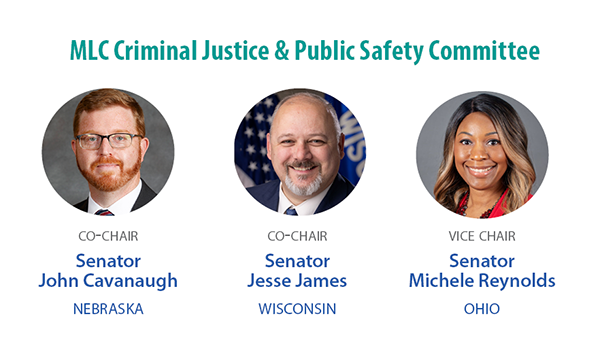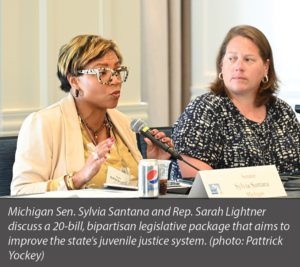Blueprints for reform: North Dakota, Indiana and Michigan are reimagining their juvenile justice systems
For many young people, the manner in which they interact with the juvenile justice system is not working.
Increased trauma. Lower levels of educational attainment. High recidivism rates. A rise in behavioral health issues.
“Justice system involvement has a host of negative outcomes for young people, particularly [those who] are low-risk and committing low-level offenses,” Nina Salomon said in July at a session led by the Midwestern Legislative Conference Criminal Justice and Public Safety Committee.
With help from Salomon and her colleagues at the CSG Justice Center, states such as North Dakota, Indiana and Michigan are exploring promising new strategies to turn around their systems, as well as the lives of young people. During the July session, a panel of policy leaders from those three states shared some of the advances being made.
Lisa Bjergaard, director of the North Dakota Division of Juvenile Services, spoke about the impact of HB 1035, a landmark law from 2021 that rewrote the state’s juvenile justice code.
“One of the most significant changes … was to broaden counsel for all youths that are facing court [action],” said Bjergaard, referring to a provision that young people automatically be provided legal representation (rather than access to counsel being based on their parents’ or guardians’ ability to pay).
Also under the new law, more low-risk youths are getting connected to social services and diverted from formal involvement with the juvenile justice system. Additionally, risk and needs assessment tools must be used in making diversion and placement decisions.  With HB 1035 in place, Bjergaard said, various state agencies and groups are forming new partnerships to advance its goals, as well as to streamline or strengthen related services, funding and staffing.
With HB 1035 in place, Bjergaard said, various state agencies and groups are forming new partnerships to advance its goals, as well as to streamline or strengthen related services, funding and staffing.
Last year, Indiana legislators passed HB 1359, a byproduct of work done by the state’s Commission on Improving the Status of Children.
“Data became the real elephant in the room that we needed to discuss … because we weren’t collecting it with integrity or fidelity,” said Rep. Wendy Rep. McNamara, author of HB 1359.
With new data-collection requirements in place, state leaders can better understand what happens to young people as they move through the system, as well as identify the services and resources that are improving outcomes. Indiana also is broadening behavioral health services, redesigning how it screens for risks and needs among young people in the system, expanding the use of diversion and transitional services, and developing standards for juvenile probation.
Some of those same structural changes may be coming to Michigan as well, under a bipartisan, 20-bill package now under consideration. It is the result of Michigan’s Task Force on Juvenile Justice Reform — a group of legislators, judges, executive branch leaders and other stakeholders that produced a statewide blueprint for reform.
Michigan Rep. Sarah Lightner, who has been involved with reform groups for several years, said part of this new legislative package aims to improve young people’s representation in judicial proceedings, regardless of their financial standing — for example, better oversight of the county-based indigent defense system, as well as an expansion of appellate services for juveniles.
Michigan Sen. Sylvia Santana added that if the package becomes law, the placement of young people in residential placement centers will be reduced while community-based services will be expanded and better funded. Those and other goals would be met by:
- expanding diversion opportunities for youths who are not a public safety risk,
- creating a statewide juvenile public defense system and best-practices standards,
- strengthening standards and quality assurance for local probation practices and statewide residential programs,
- measuring system performance, outcomes and equity, and
- establishing an advisory board for impacted youths and their families.